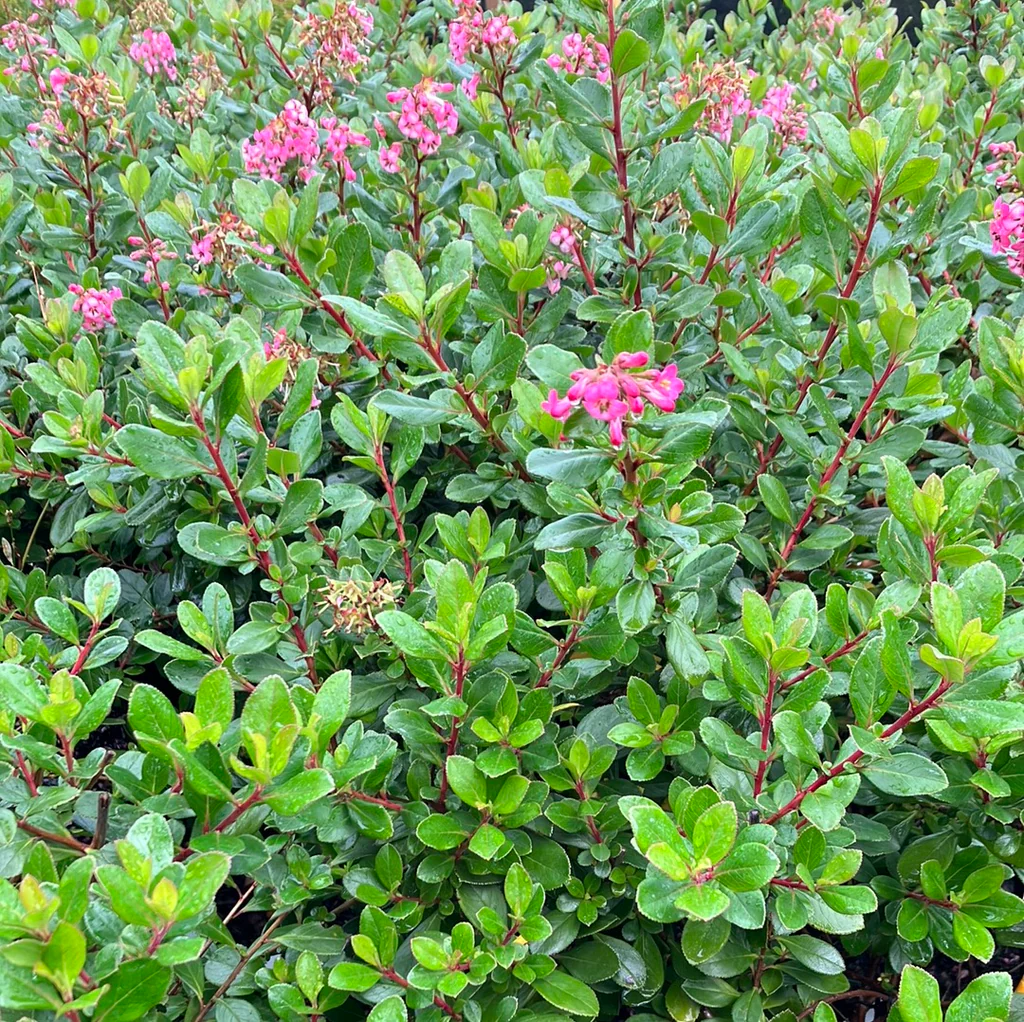7 Reasons Your Escallonia (Redclaws) Are Turning Brown
Understanding the underlying causes

Escallonia shrubs are prized for their vibrant flowers, glossy leaves, and versatility in hedges and borders. While generally hardy and easy to care for, an escallonia shrub turning brown can be a sign of stress, disease, or environmental issues. Understanding the underlying causes can help you take the right steps to restore its health and maintain its beauty.
In this article, we’ll explore the most common reasons why escallonia shrubs turn brown and provide actionable solutions to revive your plant.
Common Reasons Why Escallonia Turns Brown
1. Drought Stress
Escallonia shrubs thrive in well-draining soil but need consistent moisture to stay healthy. Extended periods of drought can lead to browning leaves.
Signs:
- Browning starts at the tips or edges of leaves.
- Leaves may curl, become crispy, or drop off.
- Soil around the plant is dry or cracked.
Solution:
- Water deeply once or twice a week during dry periods, ensuring the soil stays moist but not waterlogged.
- Apply mulch around the base to help retain soil moisture and protect roots.
2. Overwatering or Poor Drainage
While escallonia needs regular watering, too much water can cause root rot or waterlogged soil, leading to browning foliage.
Signs:
- Browning leaves throughout the plant.
- Soil feels constantly wet or soggy.
- A foul smell may indicate root rot.
Solution:
- Check that the soil drains well and is not overly compacted.
- Water only when the topsoil is dry to the touch.
- If root rot is suspected, prune affected roots and replant in well-draining soil.
3. Fungal Diseases
Escallonia is particularly susceptible to leaf spot disease, a fungal infection that causes browning or black spots on the leaves.
Signs:
- Brown or black spots appear on leaves.
- Leaves turn yellow or brown and drop prematurely.
- Affected foliage is more noticeable during wet or humid weather.
Solution:
- Prune and dispose of infected leaves and branches to prevent the spread of disease.
- Apply a fungicide recommended for leaf spot diseases.
- Improve air circulation by thinning dense growth and spacing plants appropriately.
4. Cold or Frost Damage
Escallonia is sensitive to sudden temperature drops, and frost can cause browning leaves or damage to new growth.
Signs:
- Browning appears after a frost or cold snap.
- Damage is concentrated on the outermost or upper branches.
Solution:
- Protect the plant during frost with burlap or frost cloth.
- Avoid pruning until after the last frost to prevent further stress.
- Prune damaged foliage in spring to encourage new growth.
5. Pests
Insects such as aphids, spider mites, or scale can infest escallonia shrubs and cause browning leaves. These pests feed on the plant’s sap, weakening it and leading to discoloration.
Signs:
- Leaves have small holes, webbing, or sticky residue (honeydew).
- Browning may be concentrated in specific areas of the plant.
- Presence of tiny insects or eggs on the undersides of leaves.
Solution:
- Inspect the plant for pests and treat with insecticidal soap or horticultural oil.
- For severe infestations, consult a professional for pest control.
6. Nutrient Deficiency
A lack of essential nutrients, such as nitrogen or iron, can cause escallonia to lose its vibrant green color and turn brown or yellow.
Signs:
- General browning or yellowing of leaves.
- Slow or stunted growth.
Solution:
- Conduct a soil test to identify deficiencies.
- Apply a balanced fertilizer formulated for shrubs and adjust soil pH if necessary.
7. Environmental Stress
Escallonia can become stressed due to environmental factors such as pollution, wind, or excessive heat.
Signs:
- Browning on leaves exposed to wind or harsh sunlight.
- Overall decline in plant vigor.
Solution:
- Provide a windbreak or shade during extreme weather conditions.
- Water the plant regularly to help it recover from stress.
How to Prevent Browning in Escallonia
- Choose the Right Location: Plant escallonia in a spot with full sun to partial shade and well-draining soil.
- Water Consistently: Maintain even moisture, avoiding both drought and overwatering.
- Prune Regularly: Remove dead or diseased branches to encourage healthy growth and improve air circulation.
- Monitor for Pests and Diseases: Inspect the plant regularly and treat issues promptly.
- Fertilize Appropriately: Use a balanced fertilizer to provide essential nutrients.
- Protect from Harsh Conditions: Use mulch, windbreaks, or frost covers as needed.
When to Call a Professional
If your escallonia continues to turn brown despite your efforts, it may be time to seek expert help. A professional gardener or arborist can:
- Diagnose the root cause of browning.
- Treat severe pest or disease infestations.
- Provide tailored care and maintenance advice for your escallonia shrub.
Revive Your Escallonia with Ascent Yard Care
Escallonia shrubs are a beautiful and versatile addition to any garden, and with the right care, they can thrive for years. If your escallonia is turning brown, Ascent Yard Care is here to help. Our experienced team offers professional plant care services, including pruning, pest management, and disease treatment, to restore your shrubs to their full glory.
Contact Ascent Yard Care today for expert shrub care in Victoria, BC, and let us help your escallonia thrive!
